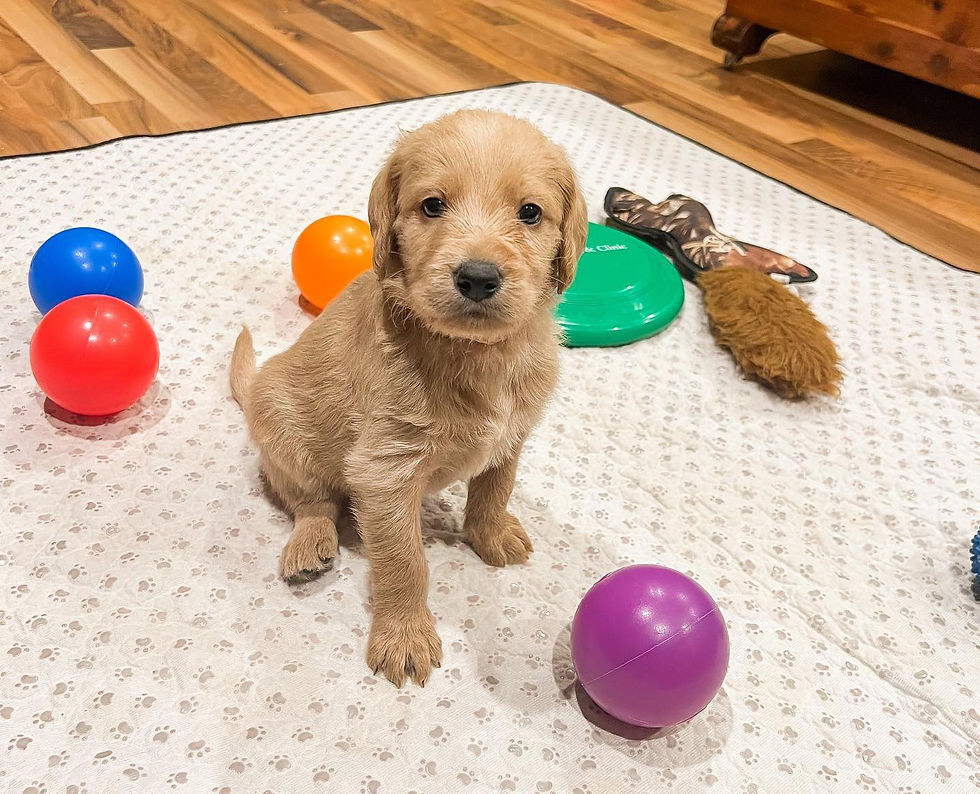The Ultimate Guide to Potty Training Your Puppy:The Importance of Crate Training
- handzsir
- Feb 24
- 3 min read
The Ultimate Guide to Potty Training Your Puppy:The Importance of Crate Training

Introduction
Potty training is one of the most essential aspects of raising a well-mannered and house-trained puppy. A structured approach that incorporates crate training and proven methods to ensures a smoother transition for both pet and owner. In this comprehensive guide, we will explore the best strategies for potty traininng.
Why Potty Training Is Essential
Potty training is more than just keeping your home clean—it fosters good behavior, strengthens the bond between you and your puppy, and establishes routines that create a stress-free environment for both of you. Without proper potty training, accidents can lead to frustration, increased stress, and even behavioral problems in your dog.
Benefits of Proper Potty Training:
Prevents accidents and reduces unwanted behaviors.
Encourages consistency in daily routines.
Builds trust and communication between you and your puppy.
Creates a comfortable and predictable environment for your dog.
Speeds up housebreaking, leading to fewer long-term issues.
The Importance of Crate Training in Potty Training
Crate training is one of the most effective tools for housebreaking a puppy. Dogs naturally avoid soiling their sleeping area, making crates an ideal aid for potty training.
How Crate Training Works:
Creates a Safe Space – A crate mimics a den-like environment, making your puppy feel secure.
Encourages Control – Puppies learn to hold their bladder longer because they don’t want to soil their crate.
Establishes a Routine – Scheduled potty breaks teach consistency and reinforce good habits.
Prevents Destructive Behavior – When properly introduced, a crate prevents chewing and other destructive habits.
Helps with Sleep Training – At night, crating prevents midnight accidents and teaches your puppy to sleep through the night.
Best Practices for Crate Training:
Choose the Right Size – The crate should be large enough for your puppy to stand, turn around, and lie down, but not so big that they can use one side as a bathroom.
Make it Comfortable – Add a soft bed, toys, and treats to make the crate a positive space.
Start Slowly – Introduce the crate gradually, ensuring that your puppy associates it with positive experiences.
Use a Schedule – Take your puppy out at consistent times (after eating, drinking, playing, and waking up).
Avoid Using the Crate for Punishment – The crate should always be a safe, happy place for your dog.
Creating a Potty Training Schedule
Having a well-structured schedule ensures success in potty training. Here’s an example of an effective potty training routine:
Sample Potty Training Schedule:
Time | Activity |
6:00 AM | First potty break of the day |
6:15 AM | 5 Min Train Session with Breakfast |
6:30 AM | Potty break |
6:45 AM | Supervised Play |
7:15 AM | Potty break |
8:00 AM | Crate time |
9:00 AM | Potty Break + Train Session |
9:30 AM | Supervised Playtime |
10:15 AM | Crate |
11:45 AM | Potty Break, Training Session with lunch, Leash Training with Walk and “Lets Go” Command |
12:45 PM | Supervised Play |
Troubleshooting Common Potty Training Issues
Even with the best training techniques, accidents can still happen. Here’s how to handle common challenges:
Frequent Accidents:
Increase supervision and limit unsupervised free-roaming.
Reinforce the use of a crate when you can’t monitor your puppy.
Adjust the potty break schedule to accommodate your puppy’s needs.
Puppy Won’t Go Outside:
Use a consistent command like “Go potty” to signal the expected behavior.
Reward successful potty breaks outside with treats and praise.
Ensure your puppy is comfortable with the outdoor environment.
Marking Behavior:
Spay/neuter your puppy if marking becomes an issue.
Thoroughly clean accident areas with enzymatic cleaners to remove scent traces.
Supervise closely and redirect any marking attempts.





Comments